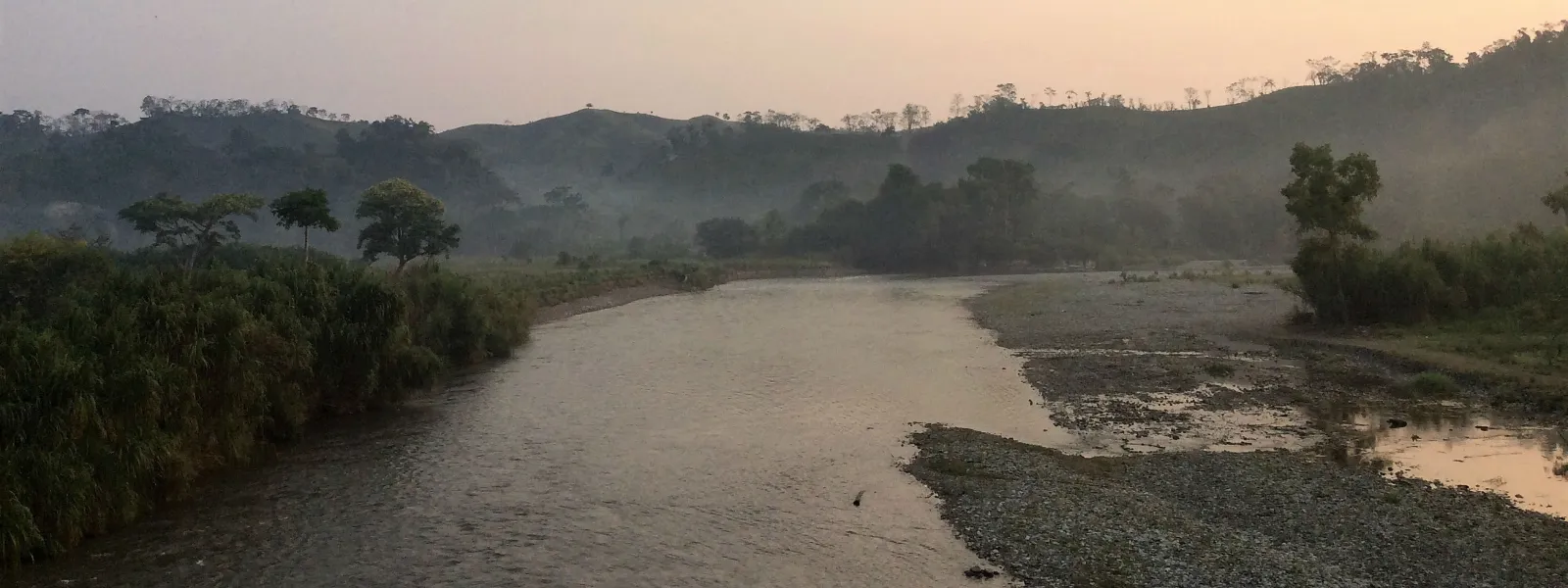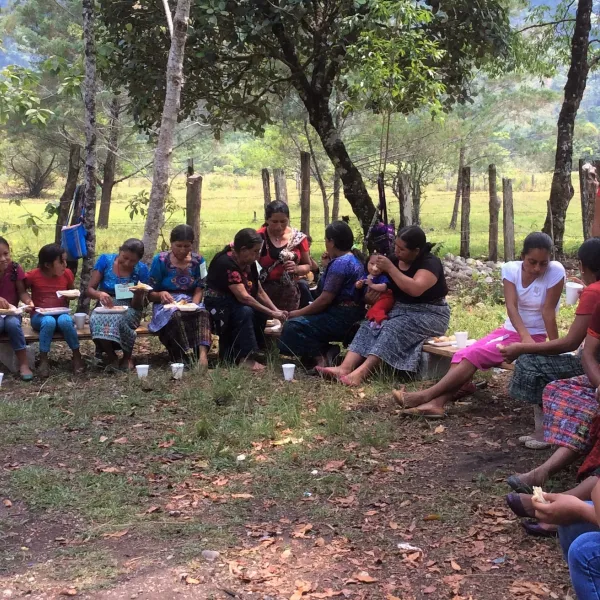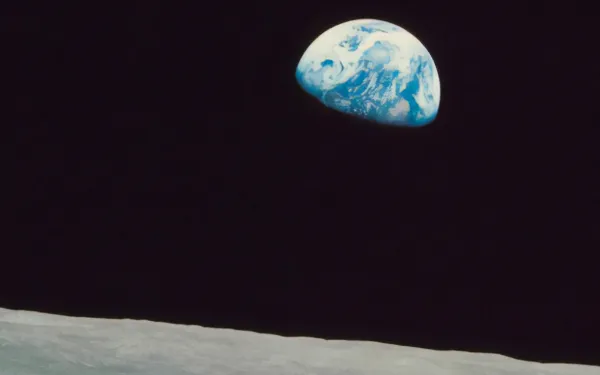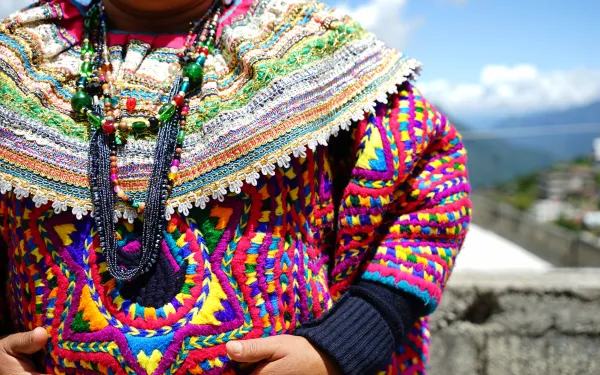
Project
Liliana Ávila /AIDAMayan women’s struggle before the Inter-American Development Bank in Guatemala
Mayan communities succeeded in getting the IDB Invest to develop a responsible exit plan after withdrawing its financing for two hydroelectric projects that negatively impacted ecosystems and the livelihoods of indigenous peoples, especially women, in the micro-region of Yichk'isis (Ixquisis).
In the struggle to defend their water, territory and way of life, indigenous Mayan communities in the Yichk'isis (Ixquisis) micro-region of northern Guatemala convinced the Inter-American Development Bank Group to withdraw its financing of two hydroelectric dams whose implementation violated their rights. The decision was also significant in that the IDB, for the first time, designed a responsible exit plan.
That historic advance was the result of the complaint that the communities filed in August 2018—with the support of AIDA, the Plurinational Ancestral Government of the Akateko, Chuj, and Q'anjob'al Native Nations, and the International Platform against Impunity. The complaint was filed with the Independent Consultation and Investigation Mechanism (MICI), the IDB Group's accountability office.
In resolving the case in September 2021, the MICI concluded that IDB Invest failed to comply with its own operational policies and safeguards, in the framework of the financing granted to the company Energía y Renovación S.A. for the implementation of the San Mateo and San Andrés hydroelectric projects.
Learn more about this achievement
In the mountains of Northwestern Guatemala, near the border with Mexico, the land is rich and fertile. Several important rivers and many other water sources feed the soil.
The residents of these mountains, many indigenous women of Mayan descent, have long depended on the waters to nourish them, to provide them with fish, as well as for agriculture, sanitation, and cooking.
But the construction of the San Mateo and San Andres dams has caused water scarcity and the contamination of rivers and other natural resources long cherished by the communities.
The near lack of water has also drastically reduced harvests, lessening the income gained from selling corn, wheat, beans, coffee, sugar cane and other products in the market. As a result, the conditions of poverty in the area have deepened.
And the risk situation is profound, particularly for women, who have played a very important role in the defense of water and territory threatened by hydroelectric projects, and are therefore victims of intimidation and stigmatization.
As guardians of their land and water, they have come to its defense and they’ll continue to prevent environmental deterioration from further harming their families.
Read our fact sheet on the case

Related projects

AIDA calls on governments to maintain democratic rule of law
In the face of the COVID-19 pandemic, we demand that Latin American governments refrain from approving projects that damage the environment and violate human rights, and that they maintain special protections for environmental defenders. In the context of the global emergency unleashed by COVID-19, the Interamerican Association for the Environmental Defense (AIDA) urges Latin American States to comply with their obligations to protect the environment and uphold human rights. Governments must refrain from advancing projects that setback established protections through harmful regulatory changes or the approval of projects without adequate social and environmental impact assessments. We also express our worry at the lack of conditions to ensure the rights to participation and access to information for people affected by high-risk projects and public policy decisions. In particular, we regret the decision of the Colombian government to conduct virtual prior consultations with ethnic communities, and the determination of the provincial government of Mendoza, Argentina, to use online means to realize consultations on development projects. While we believe that social distancing is essential to dealing with the pandemic, it is not the appropriate means of realizing the rights to participation and access to information. AIDA thus calls on States of the region to suspend the approval of environmental and other official permits for sensitive projects unrelated to the response to the health crisis, until such time as the above-mentioned rights can be adequately guaranteed. This implies taking into account that the necessary conditions do not currently exist for people affected by projects to defend themselves in court. We also emphasize that, in the face of the pandemic, actions must be framed within the path recommended by science and the law to confront the climate crisis, seeking a just transition, respectful of human rights, towards a more resilient and sustainable way of life, based on clean energy and not fossil fuels. We express our solidarity with all people affected by COVID-19. We underscore the urgency of guaranteeing and respecting their rights in the midst of the crisis, particularly for those in vulnerable conditions, including indigenous peoples, migrants, women, and environmental defenders, among others. In this regard, we demand that governments of the region maintain democratic rule of law and the special protection of environmental defenders. And we ask that international organisms closely monitor the human rights situation on the continent. Press contact: Victor Quintanilla, [email protected], +5215570522107
Read more
International Environmental Law: History and milestones
International Environmental Law (IEL) is a discipline that involves the whole world in the protection of a common good: our environment. At AIDA, we apply it every day to help individuals and communities defend the environment and the fundamental human rights that depend on it. But where did this global discipline come from and how has it evolved? Its rules have not been dictated by a national institution or an international authority. Rather, it is a compendium of declarations, treaties and rules—some binding, some voluntary—that have developed alongside scientific knowledge and awareness of the current state of our natural world. The history of IEL can be divided into three stages, separated by two of the most relevant international conferences held so far: the Stockholm Conference (1972) and the Rio de Janeiro Earth Summit (1992). And in 2016, with the signing of the Paris Agreement, a new stage began to confront humanity's most important natural challenge: the current climate emergency. The beginnings: Before Stockholm Before the 1960s, there was little environmental awareness and only a few isolated international environmental regulatory initiatives. One of these was the failed London Convention of 1900, which sought to protect African wildlife. It never came into force because it was not signed by the minimum number of parties. It was replaced 33 years later by the 1933 London Convention, which was implemented in much of colonized Africa through the creation of nature parks and species protection. During those years, other initiatives were carried out in isolation. But things really started to change in the 1960s, when public opinion became aware of the dangers threatening the planet. Some of the events that marked this era were the publication in 1962 of the book Silent Spring by Rachel Carson, which documented the negative effects of pesticides on birds and the environment; and the release of the image known as Earthrise, taken by astronaut William Anders in 1968 during the Apollo 8 mission. The Stockholm Declaration A product of the first UN Conference on the Human Environment, the Stockholm Declaration (1972) was the first international document to recognize the right to a healthy environment through 26 principles, many of which have played an important role in the subsequent development of IEL. Principle 21, for example, confirmed one of the cornerstones of IEL: the responsibility of States to ensure that activities under their jurisdiction do not cause damage to the environment of other States. The Declaration also established the Principle of Cooperation, which is crucial in the further development of IEL, by recognizing that countries should unite their efforts to meet the global challenges of our shared environment. Also in Stockholm, the UN General Assembly created the United Nations Environment Programme (UNEP), the central body in charge of environmental affairs today. Between Stockholm and Rio After Stockholm, changes began to be seen in national governments: the first green political parties were formed, some Ministries of Environment were created, and a significant amount of local environmental legislation began to be developed. In 1983, the UN created the World Commission on Environment and Development, known as the Brundtland Commission. Its work, which focused on the difficult relationship between environment and development, resulted in the report Our Common Future (1987). That document coined the concept of sustainable development - defined as "meeting the needs of the present generation without compromising the ability of future generations to meet their own needs" - which is the basis for the evolution of IEL. At this time, some of the global environmental problems that still afflict us today began to manifest themselves--including the depletion of the ozone layer, risks to biological diversity, and the threat of climate change. International cooperation was absolutely necessary and developed countries would have to help poorer countries if humanity was to be able to meet such challenges. In 1987, the Montreal Protocol was signed to combat the depletion of the ozone layer. This international agreement has been an example of successful international cooperation.Because of it, it’s believed that the ozone layer could recover by 2050. The Earth Summit in Rio de Janeiro In 1992, during this Conference, two conventions were presented to be signed by national governments: the Convention on Biological Diversity and the United Nations Framework Convention on Climate Change (UNFCCC). The Rio Declaration was also established, which reaffirmed the Stockholm Declaration and the Agenda 21 action program, which continues to guide governments and non-state actors in environmental protection activities. In Rio, in the face of growing evidence that human activities in pursuit of economic growth were responsible for major environmental threats, the central concept continued to be sustainable development. Two principles of the Rio Declaration deserve special consideration: the Precautionary Principle, the most advanced form of prevention and important to the formation of modern IEL; and Principle 10, which recognizes the right to information, participation, and justice in environmental matters. In 1998 Principle 10 gave rise to the Aarhus Convention, binding in Europe and Central Asia. The Aarhus Convention is the predecessor of the Escazú Agreement, which seeks recognition of these rights in Latin America. This recognition is also considered an important milestone in the creation of IEL because it shows the emergence of civil society as an increasingly important and active player in global environmental protection. After Rio and into the Future After Rio, all major economic treaties began to include environmental protection. A case in point is the Marrakech Agreement, which created the World Trade Organization in 1994 and was the first economic treaty to recognize the goals of sustainable development and environmental protection. The Convention on Climate Change of 1995 deserves special mention, since its signatories have met every year at the so-called Conference of the Parties (COP). Within this framework, in 1997, the Kyoto Protocol was presented. Despite not having been successful in mitigating greenhouse gas emissions, it was the first international agreement to establish legally binding obligations for developed countries. In 2000, 189 countries adopted the Millennium Declaration in New York, which strengthened the importance of sustainable development by recognizing the need for sustainable economic growth with a focus on the poor and respect for human rights. Two years later, in 2002, representatives from 190 countries attended the UN World Summit on Sustainable Development in Johannesburg to follow up on the commitments of the Rio Summit. On that occasion, they adopted the Declaration on Sustainable Development, which focused on development and poverty eradication with a legal-economic approach on "public-private partnerships”. And in 2012, the UN organized the third Conference on Sustainable Development, known as Rio + 20, which brought together 192 Member States, private sector companies, NGOs, and other organizations. The result was a non-binding document called The Future We Want. In the document, States renewed their commitment to sustainable development and the promotion of a sustainable future. Modern Times The Kyoto Protocol to address climate change gave way to the Paris Agreement (2016). In this agreement, the signatory countries committed themselves to doing everything possible to prevent the average temperature of the planet from rising by 2°C, compared to pre-industrial levels, and hopefully staying below a 1.5°C rise. The relationship between human rights and climate change was recognized in its preamble. Having been ratified by almost all countries in the world, it has immense potential as an instrument of international law. In fact, recently the first ruling that prevented a project (the expansion of an airport) was made in England, on the grounds that by proceeding the country would not be complying with the Paris Agreement. A contemporary landmark of great relevance, especially for Latin America, is Advisory Opinion 23 (2017) on the environment and human rights of the Inter-American Court of Human Rights. In it, the Court recognized for the first time the right to a healthy environment as fundamental to human existence, as well as the impacts of environmental degradation and climate change on human rights. Finally, it is worth mentioning the current construction of an international legally binding instrument for the conservation and sustainable use of marine biological diversity in areas beyond national jurisdiction. In recognition of the crucial role that the ocean plays in the health of the planet and especially in the stability of the climate, safeguarding the vast and mysterious areas in the high seas seems to be absolutely necessary. Conclusion: Where do we stand? After reviewing the most important milestones related to global efforts to address the serious environmental crisis we are experiencing, it is inevitable that we will be plunged into deep concern. Global initiatives have not succeeded in motivating the change of direction we need for our planet to begin to regain its health. As it stands, no one can ensure that future generations will be able to meet their needs as past and present generations have done. Despite the disappointments, it is important to continue promoting global initiatives where common policies are discussed and where IEL takes shape. Although these initiatives have not yet been able to stop the environmental crisis, they have strengthened IEL as an instrument to defend our causes, something that we make the most of at AIDA. Likewise, world conferences often become platforms for large-scale protests and awareness-raising campaigns directed by global civil society, which has become increasingly alert and determined to defend our environment. Today, much of the hope for change lies in the strength of civil society, especially in the young people who have awakened and come to the defense of the planet. This force finds in IEL a point of support to demand what we need: a resounding change in the model of development that still guides the affairs of the planet, and which is causing so much damage.
Read more
